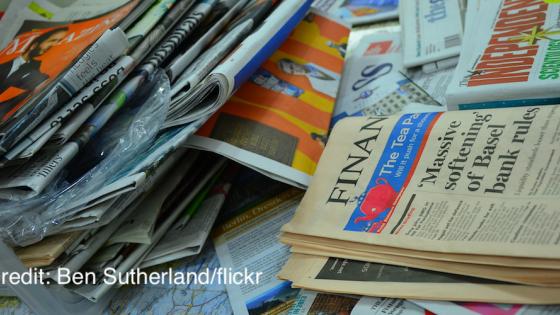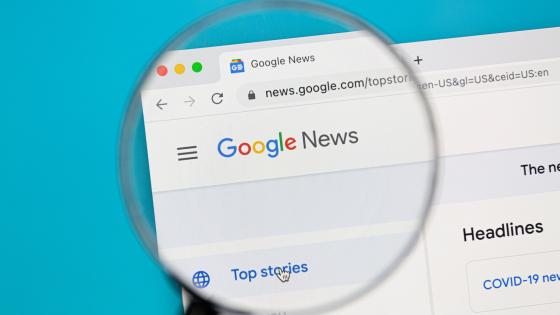As media has gone digital, the battle for ‘exclusive eyeballs’ has intensified. This partly explains why advertising revenues for mainstream media outlet have decreased. This battle may create more media diversity, because it becomes more profitable for media platforms to distinguish themselves from rivals to reach these exclusive eyeballs. While we may see less duplication of mass market content as a result, but it may also create more media echo chambers, with greater polarisation.
“Don’t tell me about the press”
A scene from the British TV comedy, Yes, Prime Minister, illustrates how polarised national newspapers used to be in many countries. In the episode “A Conflict of Interest” (1987), Sir Humphrey Appleby, a senior the civil servant, tells Jim Hacker, the British prime minister, that:
“The only way to understand the Press is to remember that they pander to their readers' prejudices.”
Hacker replies:
“Don't tell me about the press. I know exactly who reads the papers. The Daily Mirror is read by the people who think they run the country. The Guardian is read by people who think they ought to run the country. The Times is read by the people who actually do run the country. The Daily Mail is read by the wives of the people who run the country. The Financial Times is read by people who own the country. The Morning Star is read by people who think the country ought to be run by another country. The Daily Telegraph is read by the people who think it is."
In contrast, advertising-financed television and radio channels have typically focused on reaching a large audience to sell to advertisers. But if most media firms choose profiles to maximise their reach like this, the media becomes less diverse: "Fifty-seven channels and nothin' on", as Bruce Springsteen, a rock musician, described American television in 1992.
Television channels have duplicated reality television series in their fight for broad appeal. In print media, the desire to be attractive to a mass market led local newspapers to choose positions that scared off no one and were efficient at attracting large readerships. It became so important to be big in the advertising market that the winner often took all. One local newspaper could exert almost monopoly power in the advertising market.
In the digital era, this monopoly power over advertisers has eroded. Through programmatic advertising, the same local eyeballs can be reached through Facebook, Google and even foreign newspapers. Consequently, small local newspapers in Bergen or Virginia compete for local advertisers with Google, Facebook and the New York Times.
The decrease in advertising revenues for mainstream media
Increased competition for advertisers can explain the decrease in advertising revenues for mainstream media during the last ten years. Consumers who visit several platforms (multi-homers) cannot be sold to advertisers for a higher price than the additional value of reaching them more than once. This gives rise to incremental pricing. A local newspaper cannot charge more than an advertiser is willing to pay to reach a consumer in that newspaper over and above Facebook, for example (Athey et al. 2018a, Anderson et al. 2018a, Ambrus et al. 2016). The decrease in advertising revenues for traditional newspapers may therefore be explained by the huge proliferation of alternative channels for advertisers. Shi (2016) empirically tested the model of Anderson et al. (2018a) on the US magazine market and found that, while multi-homing eyeballs were worth 4.9 cents, exclusive eyeballs were worth 12 cents.
In general, the internet allows a larger number of consumers to be reached through several channels (Peitz and Reisinger 2015). The whole world can compete to sell ads that were previously effectively reserved for a local Norwegian newspaper. When a previously differentiated product – in this case, the attention of specific groups of readers – becomes something that many can offer, its price must change.
Towards media diversity or echo chambers?
The battle for exclusive eyeballs also affects media content and media diversity. Previously, advertising-financed media firms focused on the mass market because they wanted to reach a large number of eyeballs. This strategy has become less profitable. If a media platform wants to attract exclusive eyeballs, it must focus on groups that other media do not reach. This may result in greater polarisation and less duplication of content for the mass-market (Anderson et al. 2018a). Media may encourage echo chambers, not to prevent their audience seeing another opinion, but to attract exclusive eyeballs to offer advertisers. Jim Hacker’s media landscape might also become the norm in segments that were previously served by media firms that focused on the mass market. It could make economic sense for advertisers to choose outlets like The Morning Star or Breitbart News Network.
Netflix, HBO, or both?
Many digital platforms collect their revenues mainly or entirely from consumers. The principle of incremental pricing may be crucial also in these cases. Why subscribe to both Netflix and HBO? Because each offers a positive incremental value.1 For instance, to have access to the latest season of Game of Thrones, you need to subscribe to HBO; to watch The Crown, you need to subscribe to Netflix. If the streaming platforms attempt to reach multi-homers (buy HBO and Netflix), their competitive strategies change dramatically compared to the case where they focus on attracting consumers who buy HBO or Netflix. If consumers subscribe to either HBO or Netflix, consumer reservation prices are the standalone value for HBO and Netflix. In contrast, the maximal (reservation) that consumers who subscribe to HBO are willing to pay for Netflix (and vice versa) is the incremental value of Netflix content (Kim and Serfes 2006, Anderson et al. 2017). A slight reduction in the subscription price of HBO would turn some previously exclusive (single-homing) consumers of Netflix into shared ones (multi-homers).
Analogously, consumers with a multi-purpose tablet like the Apple iPad also frequently have an Amazon Kindle ebook reader. The incremental pricing principle in practice is illustrated by Amazon’s CEO and founder Jeff Bezos (Amazon 2010):
"We're seeing that many of the people who are buying Kindles also own an LCD tablet (e.g. an iPad) … They report preferring Kindle for reading because it weighs less, eliminates battery anxiety with its month-long battery life, and has the advanced paper-like Pearle-ink display that reduces eye-strain, doesn't interfere with sleep patterns at bed time, and works outside in direct sunlight, an important consideration especially for vacation reading."
Bezos focused on the value of having a Kindle in additiontoaniPad–in other words the incremental value ofa Kindle for potential multi-homers (Anderson et al. 2017).
Price effects of mergers
The research we have cited assumes that media platforms are financed only by advertising or only by users. In a recent paper, we combine elements from these models to allow platforms to charge both sides of the market – consumers as well as advertisers (Anderson et al. 2018b). We are able to show that consumer prices are independent of the number of platforms when some (but not all) consumers multi-home, while advertising prices fall as the fraction of multi-homers increases.
Similarly, a merger between two platforms does not affect consumer prices, but is nonetheless profitable since the merging platforms can charge advertisers more for jointly shared eyeballs.
References
Amazon (2010), "Third-Generation Kindle Now the Bestselling Product of All Time on Amazon Worldwide", press release.
Ambrus, A, E Calvano, and M Reisinger (2016), "Either or both competition: A 'two-sided' theory of advertising with overlapping viewerships", American Economic Journal: Microeconomics 8(3): 189-222.
Anderson, S, Ø Foros, and H J Kind (2017), "Product functionality, competition, and multi-purchasing", International Economic Review 58(1): 183-210.
Anderson, S P, Ø Foros, and H J Kind (2018a), "Competition for advertisers and for viewers in media markets", The Economic Journal 128: 34-54.
Anderson, S P, Ø Foros, and H J Kind (2018b), "The importance of consumer multi-homing (joint purchases) for market performance: mergers and entry in media markets", Journal of Economics & Management Strategy, forthcoming.
Athey, S, E Calvano, and J Gans (2018), "The impact of consumer multi-homing on advertising markets and media competition", Management Science 64(4): 1574--1590.
Kim, H, and K Serfes (2006), "A location model with preference for variety", Journal of Industrial Economics 54(4): 569-595.
Peitz, M, and M Reisinger (2015), "Media economics of the Internet", In D Strömberg, and J Waldfogel (eds.), Handbook of Media Economics, Vol. 1, North-Holland.
Shi, C M (2016), "Catching (exclusive) eyeballs: Multi-homing and platform competition in the magazine industry", PhD thesis, University of Virginia.
Endnotes
[1] There is some overlap in the content offered by HBO and Netflix, especially for vintage programming. For example, the HBO classic The Sopranosis also available on Netflix.






